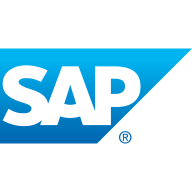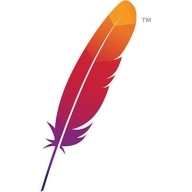SAP HANA, also known as SAP High-performance Analytics Appliance, is a multi-model database that stores data in its memory, allowing users to avoid disk storage. The product combines its robust database with services for creating applications. SAP HANA is faster than other database management systems (DBMS) because it stores data in column-based tables in main memory and brings online analytical processing (OLAP) and online transaction processing (OLTP) together.
The column-oriented in-memory database design allows users to run high-speed transactions alongside advanced analytics, all in a single system. This provides companies with the ability to process very large amounts of data with low latency and query data in an instant. By combining multiple data management capabilities, the solution simplifies IT, helps businesses with innovations, and facilitates digital transformation.
The solution is structured into five groups of capabilities, categorized as:
- Database design
- Database management
- Application development
- Advanced analytics
- Data virtualization
There are three more SAP products that work alongside SAP HANA and complete the experience for users together. SAP S/4HANA Cloud is a ready-to-run cloud enterprise resource planning (ERP). SAP BW/4HANA is a packaged data warehouse, based on SAP HANA, which allows users to consolidate data across the enterprise to get a consistent view of their data. Finally, SAP Cloud is a single database as a service (DBaaS) foundation for modern applications and analytics across all enterprise data. All three products can combine with SAP HANA to deliver to users an optimized experience regarding their data.
SAP HANA Features
Each architectural group of capabilities of SAP HANA has various features that users can benefit from. These include:
-
Parallel processing database: SAP HANA utilizes a single platform to run transactional and analytical workloads.
-
ACID compliance: This feature ensures compliance with requirements for Atomicity, Consistency, Isolation, and Durability (ACID) standards.
-
Multi-tenancy: This feature allows multiple tenant databases to run in one system while sharing the same memory and processors.
-
Multi-tier storage and persistent memory support: SAP HANA's native storage extension is a built-in capability to manage between memory and persistent storage, including SAP HANA Cloud Data Lake.
-
Scaling: The scaling feature supports terabytes of data in a single server and distributes large tables across multiple servers in a cluster to scale further.
-
Data modeling: This feature consists of graphical modeling tools that enable collaboration between stakeholders and the creation of models to execute complex business logic and data transformation in real time.
-
Stored procedures: The product has a native language to build stored procedures and uses advanced capabilities to create complex logic.
-
Administration: This feature consists of administration tools for various platform lifecycle, performance, and management operations and automations.
-
Security: SAP HANA provides its users with real-time data anonymization features to extract value from data while protecting privacy.
-
Availability and recovery: The tool supports high availability and disaster recovery through an array of techniques, including backup, storage mirroring, synchronous, asynchronous, and multitarget system replication.
-
Extended application services: Through its built-in application server, users can develop services such as REST and ODATA, as well as web applications that can run on multiple locations.
-
Client access: The product offers clients the ability to access it via other application platforms and languages, including Java, JavaScript, R, and Go.
-
Application lifecycle management: This set of features facilitates the building and packaging of applications, transporting them for development to test to production, and then deploying them.
-
Application development: This feature consists of a set of tools that offer application development on premises and in the Cloud. The programming language ABAP includes additional optimized features to build extensions to SAP applications.
-
Search: The search feature uses SQL to locate text promptly across multiple columns and textual content.
-
Spatial processing: This product feature provides native support for spatial data types and spatial functions.
-
Graph: Through this feature, users of the product can store and process highly connected data using a property graph.
-
Streaming analytics: This feature combines various data sources that users can utilize to discover trends over a set period.
-
Data integration and replication: The solution offers comprehensive features to handle all data integration scenarios.
-
Data federation: This feature allows users to perform queries on remote data sources in real time with data federation.
-
Caching: The capacity to cache data provides users with the ability to optimize federated queries against remote sources of data.
SAP HANA Benefits
SAP HANA provides many benefits for its users. These include:
- This solution offers a high level of data and application security, beginning from a secure setup and providing continuous support.
- SAP HANA offers augmentation for applications and analytics with built-in machine learning (ML).
- The solution works in a timely manner, as it provides a response to queries within seconds in large production applications.
- SAP HANA simplifies work, as it provides a single gateway to all user data with advanced data virtualization.
- The product is very flexible, as it allows users to deploy applications in a public or private cloud, in multiple clouds, on premises, or hybrid.
- SAP HANA scales easily for data volume and concurrent users across a distributed environment.
- This is a powerful solution in terms of querying large datasets with a massively parallel processing (MPP) database.
- SAP HANA is a versatile product that supports hybrid transactional and analytical processing as well as many data types.
- The product provides a smaller data footprint with no data duplication or advanced compression, and reduces data silos.
Reviews from Real Users
According to a database consultant at a pharma/biotech company, SAP HANA is a very robust solution with good data access.
Bruno V., owner at LAVORO AUTOM INF E COM LTDA, likes SAP HANA because the product offers advanced features, helps reduce hours, and makes it easy to find what you need.
Spark SQL is a Spark module for structured data processing. Unlike the basic Spark RDD API, the interfaces provided by Spark SQL provide Spark with more information about the structure of both the data and the computation being performed. There are several ways to interact with Spark SQL including SQL and the Dataset API. When computing a result the same execution engine is used, independent of which API/language you are using to express the computation. This unification means that developers can easily switch back and forth between different APIs based on which provides the most natural way to express a given transformation.



